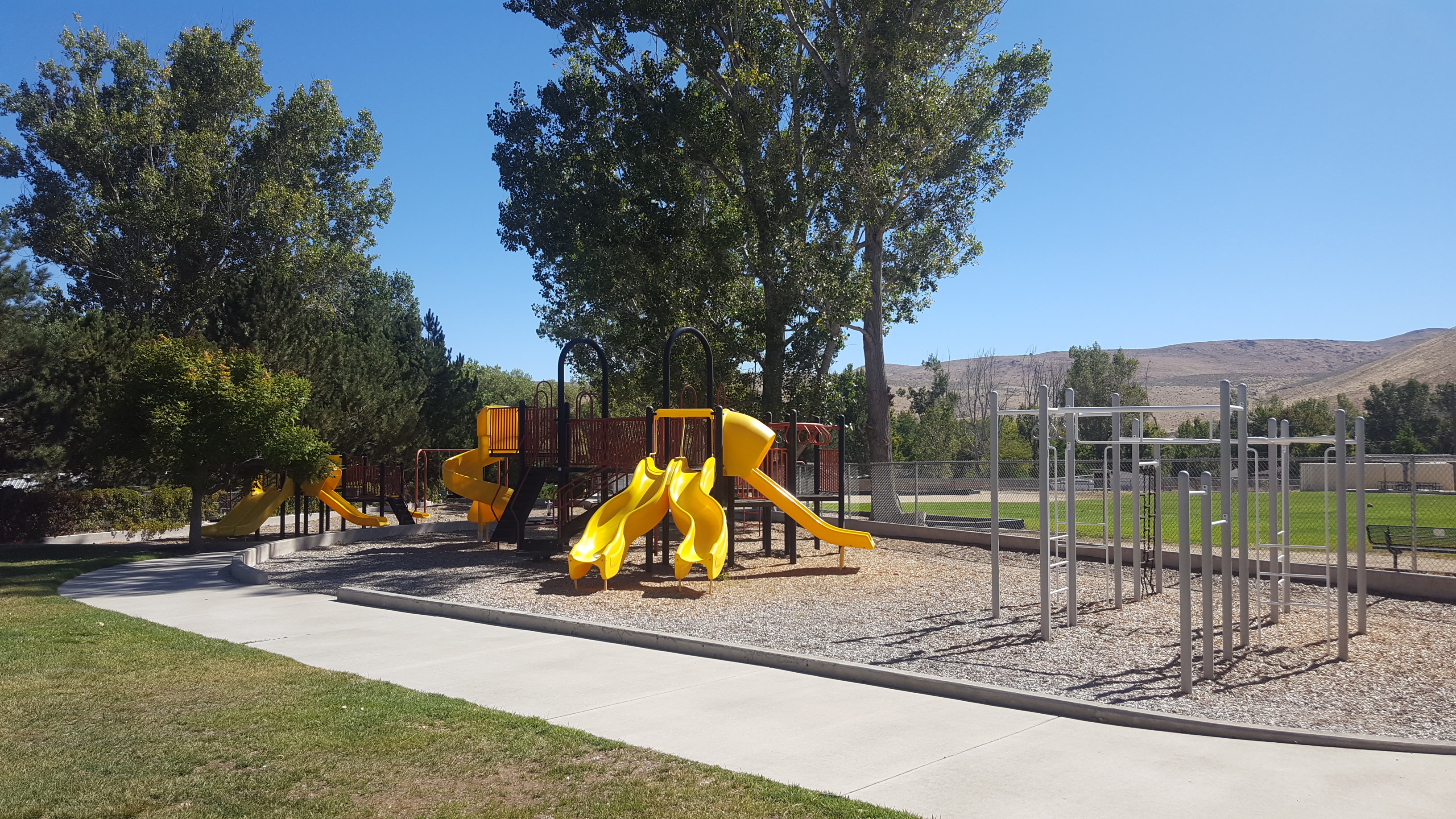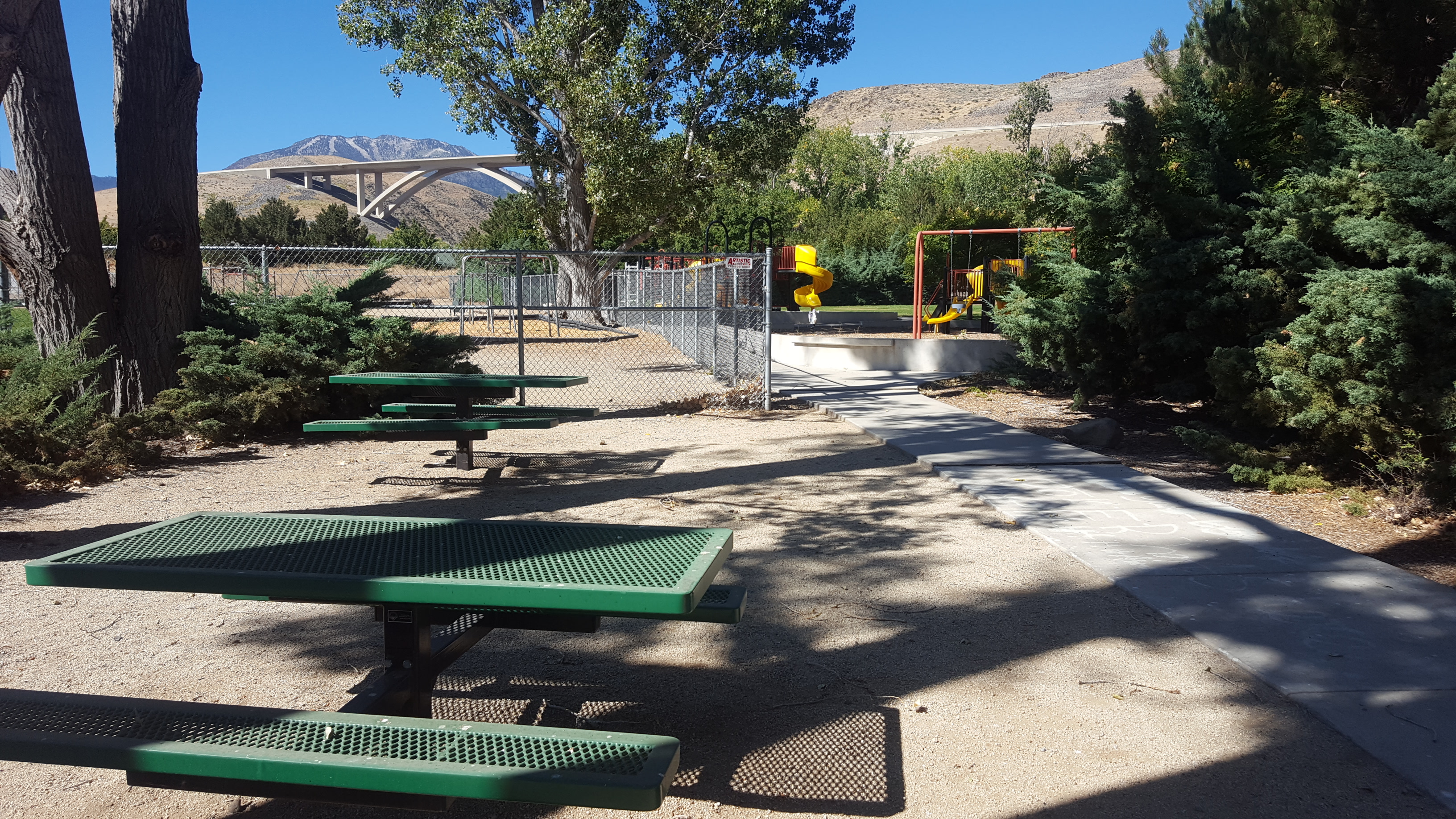Pleasant Valley Park
405 Surrey Drive, Reno, NV 89521 (click here to view a map)


Park History

The history of this area goes back to the days before Nevada was a state. With its proximity to the gold rush in California and the Comstock Lode in Virginia City, the entire Washoe Valley was one of the earliest settlements in the state. During the late 1800s, the valley was home to many quartz mills. Lumber was harvested in the mountains and brought down to the valley in flumes, then transported to the Comstock mines. The valley was also home to many ranches, raising cattle and growing crops to supply the growing population. One of the first European settlers in Pleasant Valley was George Smith. Smith and his family were Mormons from the Utah Territory who came to the area around 1858 and settled on 160-acres of land. Smith named the area Pleasant Valley. The family farmed the land with alfalfa, wheat and barley for many years. As one visitor reported, “Looking around in Pleasant Valley are waving grass and green orchards and happy homes with families named Smith.”
Farms and ranches were important to Pleasant Valley. The farmers got water for their crops from Washoe Lake and from the creeks coming off of Mt. Rose. Water was such an important commodity. One newspaper observed, “This is the lake which the Comstock papers thought of no value and recommended its drainage. The man or set of men, who attempt to drain Washoe Lake, will have more injunctions and lawsuits on his hands than generally sought by the law abiding citizens.”
In 1872, the Virginia and Truckee Railroad (V&TRR) was extended from Carson City to Reno and came through Pleasant Valley with a stop at Smith’s place, plus a side track to the Stevenson and Douglas mill. The side track allowed machinery to be installed at a mill, including five stamps. The newspapers in the late 1800s have numerous mentions of accidents or near accidents involving livestock and wagons crossing the train tracks. The V&TRR declined in the late 1920s and by 1950, it stopped running and the tracks were removed.
Image: Ticket for the V&T Railroad. Source: Wikipedia Commons
Activities: Picnicking, Children's Playgrounds, Junior Ranger Program
